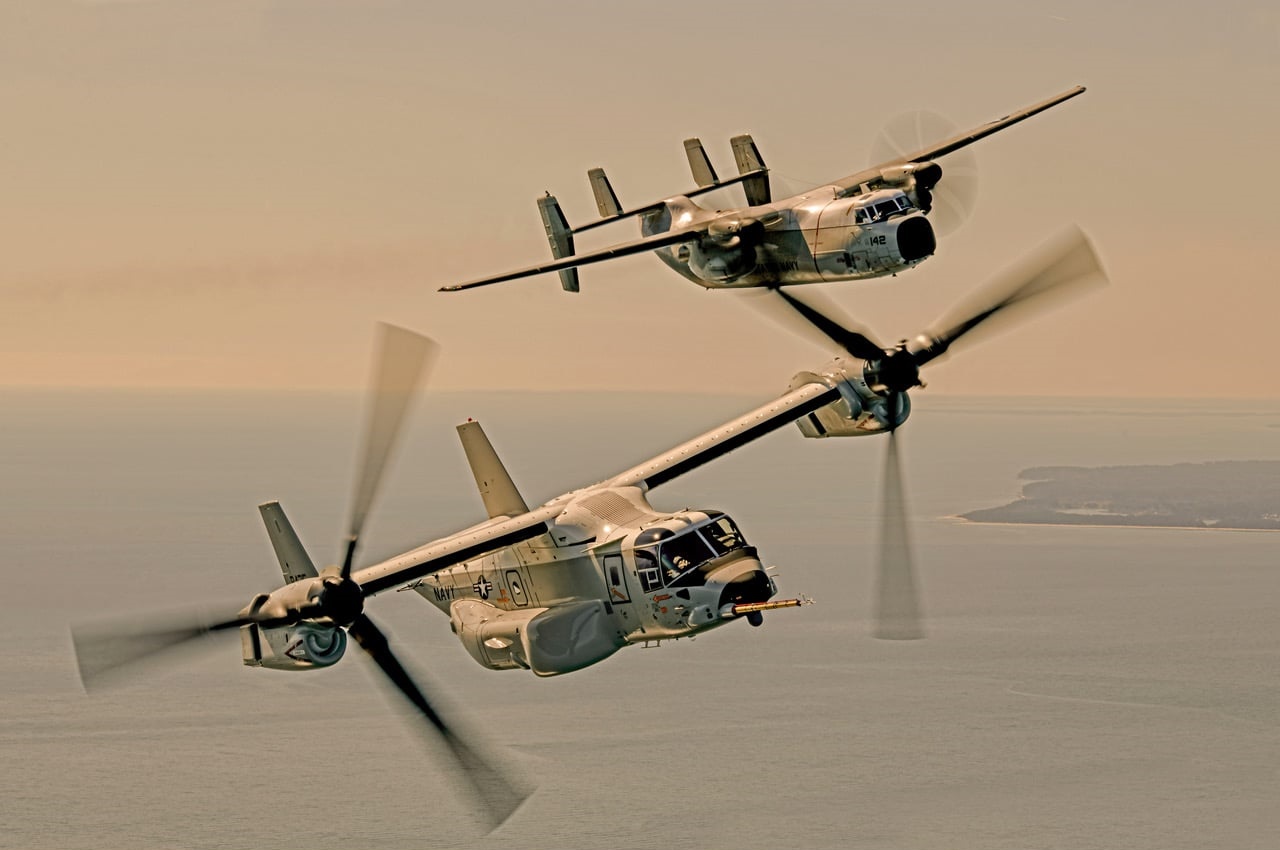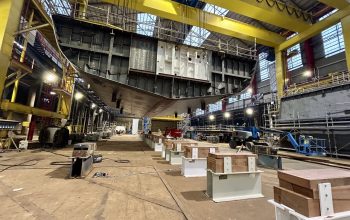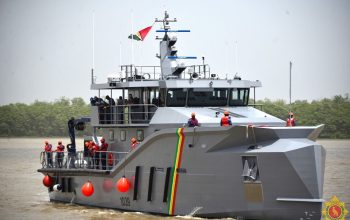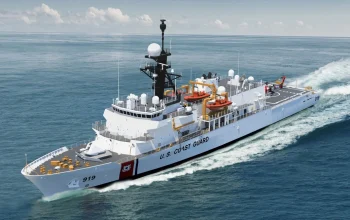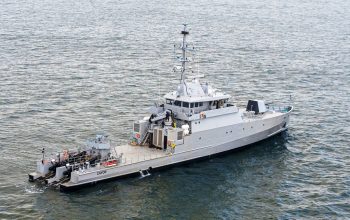The recent cross-country flight of the U.S. Navy’s new CMV-22B Carrier Onboard Delivery (COD) variant of the Osprey tilt-rotor aircraft was not only a milestone for the program, but also proved to be a perfect opportunity to demonstrate the effective fusion of development and operational test in a real-world environment. Over a two-day flight totaling just over 6.5 hours in the air, pilots LCDR Steve “Sanchez” Tschanz of Air Test and Evaluation Squadron (HX) 21 “Blackjacks” and CDR Kristopher “Junk” Carter of Air Test and Evaluation Squadron (VX) 1 “Pioneers” and crew chief Naval Aircrewman (Mechanical) 1st Class Devon Heard flew the first CMV-22B from the Bell Military Aircraft Assembly & Delivery Center in Amarillo, Texas, to Naval Air Station Patuxent River in early February. It was the first flight of the aircraft outside of the manufacturer’s test area, and it mirrored many of the conditions that the aircraft will encounter when operational.
The role of developmental testing, which is the mission of HX-21, is to identify whether an aircraft or system meets the promised specifications. Operational testing, which is what VX-1 does, focuses on the ability of an aircraft or system to operate in the environments that it will encounter once it is deployed to the fleet. Prior to the flight, Tschanz, Heard, Bell test pilot Andrew Bankston, and Naval Air Crewman (Mechanical) 2nd Class Trenton Olsheski conducted a series of developmental test flights to ensure the aircraft met its specifications. Following those test flights, it was time to deliver the aircraft to its new home at NAS Patuxent River. Or, more accurately, almost time – the crew ended up waiting nearly a week for a hole in the weather to open up between Texas and Maryland. Because the aircraft was fitted with extensive test equipment, the flight was limited to clear weather and daylight hours, which narrowed their options.
On Saturday, Feb. 1, the weather finally cooperated and Tschanz, Carter and Heard decided to fly first to Millington, Tennessee, for a refueling stop before continuing on to Patuxent River. Having flown together before, the three men quickly fell into a routine: while Tschanz was flying the aircraft, for example, Carter would be busy monitoring communications and Heard kept his eye on the weather. The Osprey’s high-visibility paint scheme, which the Navy uses to help make it easier to identify noncombatant aircraft – and which, Tschanz joked, was more flattering than the usual matte blue-gray paint on the aircraft’s bulkier profile – certainly was part of the attraction when the aircraft landed in Millington, where the Naval Support Activity Mid-South base is located.
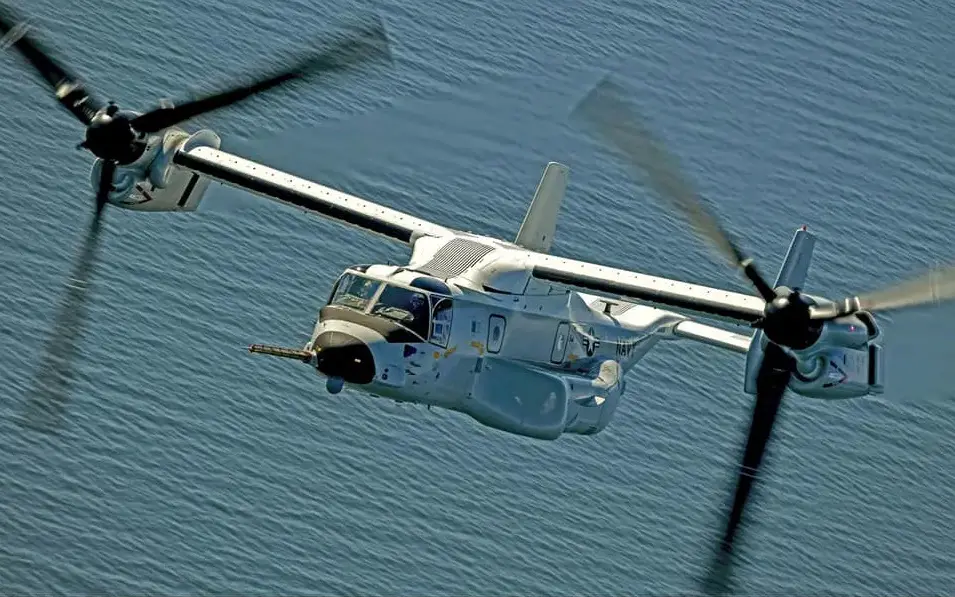
After lunch and a refueling at Millington, the crew departed in the afternoon, expecting to arrive at NAS Patuxent River in the late afternoon. But approximately nine-tenths of the way home, the weather started closing in over their destination, and the crew elected to divert to Lynchburg, Virginia to wait out the rain overnight. And once again, like in Millington, Tschanz, Carter, and Heard found themselves instant celebrities as pilots and aviation enthusiasts descended on them to ask questions about their unique Osprey. The following morning, Tschanz, Carter, and Heard flew through clear skies to land at NAS Patuxent River to the welcome of their families and squadron mates, bringing to a successful close the aircraft’s first cross-country flight.
The CMV-22B is designed to carry up to 6,000 pounds of cargo and/or personnel and operate up to a range of 1,150 nautical miles. One of the reasons the Navy selected the V-22 airframe to serve in the COD role is because of its ability to carry the Pratt & Whitney F135 engine power module used by the F-35C Lightning II Joint Strike Fighter. The Navy’s program of record is to acquire 48 aircraft across all VRM squadrons to serve as replacements for the venerable C-2A Greyhound, which has been fulfilling the COD role since 1966. Fleet Logistics Multi-Mission Squadron (VRM) 30 “Titans,” based on the West Coast of the United States, will take possession of its first CMV-22B this summer, and is scheduled to field the Ospreys on its first operational detachment aboard the USS Carl Vinson (CVN 70) later next year. A new squadron, Fleet Logistics Multi-Mission Squadron (VRM) 40, will be established on the East Coast, will take possession of its aircraft beginning in FY2022.
